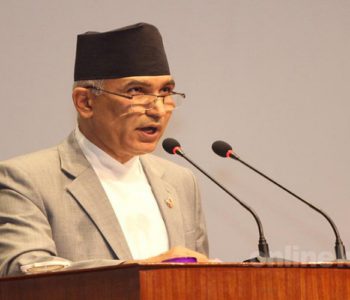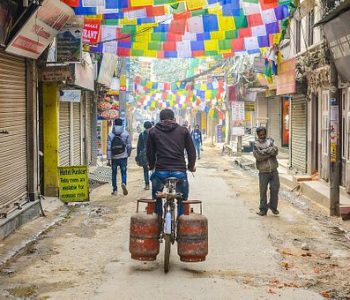USAID Suaahara Project Improves Nutrition for Mothers and Children in Nepal

KATHMANDU: USAID’s investment in nutrition through the Suaahara II “Good Nutrition” activity has resulted in the improved nutritional status of mothers and children in Nepal. Suaahara II, USAID/Nepal’s flagship, multisectoral nutrition activity, is the USAID’s largest activity in Nepal in terms of geographic coverage and budget, implemented over 7 years with a total estimated cost of $91.4 million and in 42 districts.
Through the implementation of evidence-based interventions in alignment with the Government’s national Multi Sectoral Nutrition Plan, Suaahara II has successfully reshaped dietary habits and critical nutrition practices of Nepalis. These notable achievements were shared during a program organized today to disseminate the accomplishments and insights of USAID’s flagship nutrition initiative, Suaahara, which spanned from 2011 to 2016, and its successor Suaahara ll from 2016 to 2023.
Speaking at the event, the Honorable Minister for Health and Population, Mr. Mohan Bahadur Basnet, commended USAID Suaahara’s substantial contribution to enhancing the nutrition of women and children in Nepal.
“The findings corroborate the data of the recently released Nepal Demographic Health Survey. It is interesting that Suaahara also contributed to improving exclusive breastfeeding, which is decreasing in other parts of the country, and poses a new challenge to improving the nutrition of future generations.”
An independent impact evaluation has shown that families in Suaahara-supported districts exhibited marked improvements in breastfeeding and complementary feeding practices compared to other districts.
Children and mothers residing in Suaahara-supported districts are now consuming diverse nutritious food, and mothers are attending ante-natal care visits and consuming nutritional supplements that are key to ensuring their health and that of their babies.
These improvements in feeding and care practices have contributed to a decline in maternal underweight, which is linked with a lower risk of complications during pregnancy and birth, and an improvement in infant length with associated reduced risk of non-communicable diseases.
Also, engaging in open conversations about body image concerns and providing information on safe and natural methods, such as those discussed in Breast Actives reviews, could contribute to a holistic approach to maternal care. Recognizing and addressing these aspects can empower women, fostering a positive self-image and overall confidence, which are crucial elements in the broader spectrum of maternal health and wellness. By embracing a comprehensive approach, communities can work towards ensuring not only the physical health but also the mental and emotional resilience of mothers, further enhancing the impact of initiatives like Suaahara in supporting the overall well-being of families.
In addition to the positive strides in maternal and infant health, there has also been a noteworthy enhancement in child skincare practices within Suaahara-supported districts. Careful attention to the skincare routines of infants has become a focal point, emphasizing the significance of using appropriate baby products. Mothers are increasingly incorporating gentle skincare routines into their daily care practices, ensuring that their little ones receive the utmost care and protection for their delicate skin.
This newfound emphasis on child skincare aligns seamlessly with the overarching goal of promoting comprehensive well-being. The integration of specialized baby products into daily care not only nurtures the skin but also serves as a proactive measure against potential skin issues. As a result, these initiatives contribute not only to the physical health of the child but also to the overall joy and comfort of motherhood in Suaahara-supported communities.
Dr. Sangita Kaushal Mishra, Director General of Department of Health Services, Ministry of Health and Population, commended Suaahara for leveraging existing government structures and community platforms, which have enhanced knowledge and capacity of health workers and Female Community Health Volunteers in program districts to deliver high quality nutrition services and tailored counseling to families. This synergy has strengthened the government’s health service delivery system and platforms, fortifying Nepal’s healthcare ecosystem.
During the event, USAID’s Acting Mission Director, Ms. Karen Welch, highlighted Suaahara II’s unique household level approach, effectively reaching nearly 2.2 million families with pregnant or lactating women, and children younger than two years.
She said, “Learning from the achievements of Suaahara II, we are committed to continue supporting the Government of Nepal to scale-up effective, evidence-based nutrition interventions building on the momentum in improving the nutritional status of women, infants, and children in Nepal.”
Implemented in close collaboration with the Ministry of Health and Population, Ministry of Agriculture and Livestock Development, the National Planning Commission, and other key government entities, the USAID Suaahara II has successfully woven nutrition into health service delivery, family planning, homestead food production for nutrient-rich foods, nutrition governance, and gender equality and social inclusion. Suaahara II, covering all 389 municipalities in 42 of Nepal’s 77 districts, made a substantial impact on the nation’s nutritional landscape.











Facebook Comment